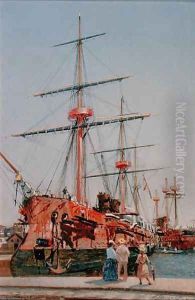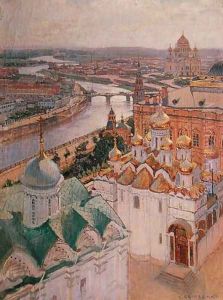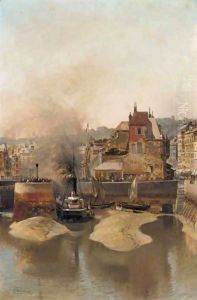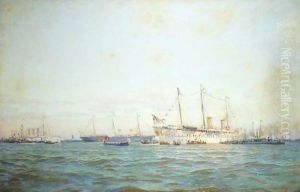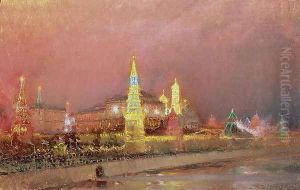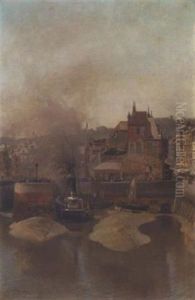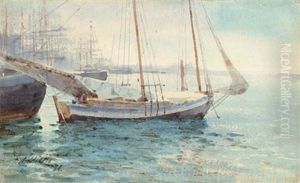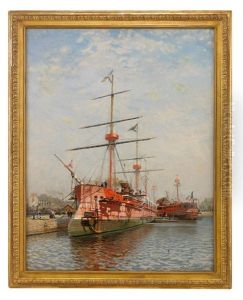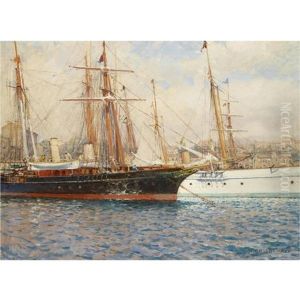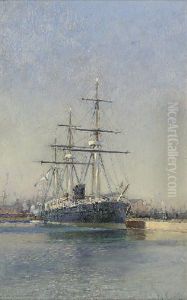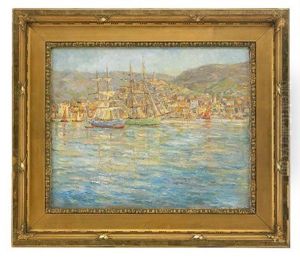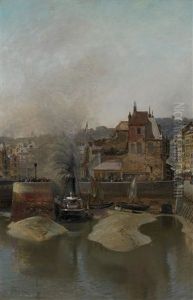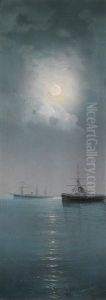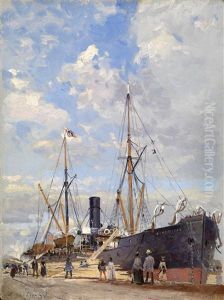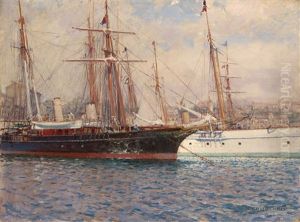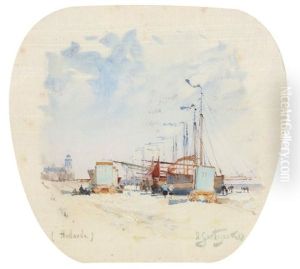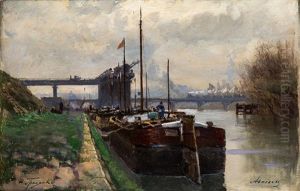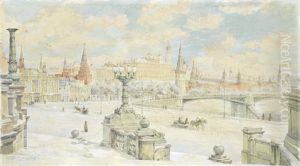Nikolai Nikolaevich Gritsenko Paintings
Nikolai Nikolaevich Gritsenko was a Russian painter known primarily for his marine scenes and naval subjects. Born on December 22, 1856, in the Russian Empire, Gritsenko demonstrated an early interest in art, which led him to pursue a career in painting. His talent was recognized at a young age, and he went on to study at the Imperial Academy of Arts in Saint Petersburg, one of the most prestigious art schools in Russia at the time.
During his time at the Academy, Gritsenko was influenced by the prevailing academic traditions of the era, which emphasized classical training and the mastery of technique. He was particularly drawn to the subject of the sea and ships, which became the predominant theme of his artistic output. His dedication to his craft earned him recognition and awards, and upon graduation, he traveled abroad to further his studies and gain exposure to the works of Western European artists.
Gritsenko's travels took him to countries such as France and Italy, where he absorbed the influences of various artistic movements and refined his own style. Upon returning to Russia, he became an active member of the art community, participating in exhibitions and gaining a reputation for his maritime works. His paintings were characterized by their detailed depiction of ships and the sea, often capturing the dynamic interplay of light and water with a sense of realism.
Throughout his career, Gritsenko remained committed to his subject matter, contributing to the genre of marine art in Russia. His works were appreciated for their technical skill and ability to convey the mood of the sea, from the tranquility of calm waters to the energy of a storm. Gritsenko's contribution to Russian art was cut short when he passed away at the relatively young age of 43 on March 21, 1900.
Despite his early death, Gritsenko's legacy endured through his paintings, which continued to be admired for their artistic quality and historical value. His works can be found in various museums and private collections, serving as a testament to his skill as a marine artist and his place in the annals of Russian art history.
